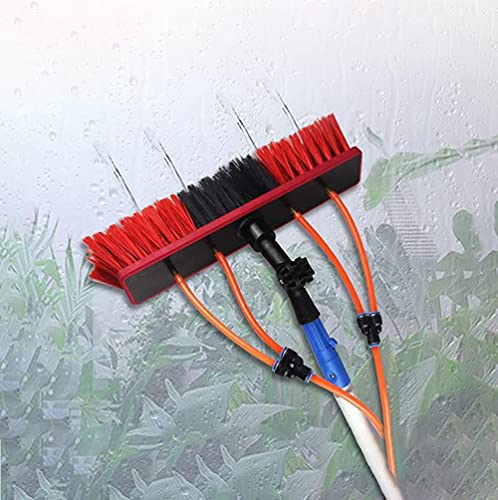ched999uk
Well-known member
- Messages
- 5,223
- Location
- Lancashire
So it looks like the wire coming out of the relay is on the third pin labelled pin6. This is supposed to be the one that feeds the fridge in a caravan. The one it should be connected to is the one next to the 0V pin! I doubt this will make a difference to be honest but it's quick to try.
Also there should not be any bare wire on show at the relay. The cables should be stripped back so that when inserted and tightened no bare wire is exposed (in case something falls on it, so it cant cause a short).
From the image it looks like your fuses are for your pumps as they are red ones that are 10 amps. There is another fuse but that has a cover on. What worries me a little is there are 2 fairly thick red cables that I guess power your reels but they don't appear to have any fuses in!!!
I know I am a bit paranoid about fuses but they are really critical as a battery can give out so much power to melt insulation and cause fires!! I almost lost a car due to an electrical issue a long time ago. My fault I had 'temporarily' installed some cable as I had 'transplanted' an engine and a wire shorted on exhaust, insulation started smoking and luckily smoke came through dash vents! It too a good few seconds before I realised what it was. Also lucky I had fire extinguisher!!! Part of wiring harness was well alight!!! Fire was put out and disaster averted but it was a wake up call.....
Anyway back to volt drop. Swap the output to the terminal next to the 0V, trim the 0v wire so no insulation is exposed and see if that helps.
The single earth wire, I assume from leisure Battery to chassis could be too small. It looks like you have wired your pumps and reels back to the 0V terminal of your battery? If that's the case then the leisure battery earth is OK as it's only passing the same current as relay is charging at. That said taking a power feed from under the dash to potentially supply 30 amps is not a good idea. I am surprised that a fuse hasn't blown, unless it's been tapped in before the fuse box!!!
Your mate that is an Auto electrician? Sorry but if he doesn't know about relays (voltage sensing or otherwise) I 'm not sure what auto electrics he knows about? He should know that cables have to be correctly sized, fused and routed let alone how to fault find with a multimeter. If he is training then OK but if he is working on peoples cars what does he actually know how to do? Sorry if that's insulting to him but it's just a 12v system, nothing complex. He should be capable of following a 12v cable and measuring at appropriate points to work out where the fault is.
Anyway back to volt drop. Swap the output from relay (one that goes to leisure battery) to the terminal next to the 0V, trim the 0v wire so no insulation is exposed and see if that helps.
Also there should not be any bare wire on show at the relay. The cables should be stripped back so that when inserted and tightened no bare wire is exposed (in case something falls on it, so it cant cause a short).
From the image it looks like your fuses are for your pumps as they are red ones that are 10 amps. There is another fuse but that has a cover on. What worries me a little is there are 2 fairly thick red cables that I guess power your reels but they don't appear to have any fuses in!!!
I know I am a bit paranoid about fuses but they are really critical as a battery can give out so much power to melt insulation and cause fires!! I almost lost a car due to an electrical issue a long time ago. My fault I had 'temporarily' installed some cable as I had 'transplanted' an engine and a wire shorted on exhaust, insulation started smoking and luckily smoke came through dash vents! It too a good few seconds before I realised what it was. Also lucky I had fire extinguisher!!! Part of wiring harness was well alight!!! Fire was put out and disaster averted but it was a wake up call.....
Anyway back to volt drop. Swap the output to the terminal next to the 0V, trim the 0v wire so no insulation is exposed and see if that helps.
The single earth wire, I assume from leisure Battery to chassis could be too small. It looks like you have wired your pumps and reels back to the 0V terminal of your battery? If that's the case then the leisure battery earth is OK as it's only passing the same current as relay is charging at. That said taking a power feed from under the dash to potentially supply 30 amps is not a good idea. I am surprised that a fuse hasn't blown, unless it's been tapped in before the fuse box!!!
Your mate that is an Auto electrician? Sorry but if he doesn't know about relays (voltage sensing or otherwise) I 'm not sure what auto electrics he knows about? He should know that cables have to be correctly sized, fused and routed let alone how to fault find with a multimeter. If he is training then OK but if he is working on peoples cars what does he actually know how to do? Sorry if that's insulting to him but it's just a 12v system, nothing complex. He should be capable of following a 12v cable and measuring at appropriate points to work out where the fault is.
Anyway back to volt drop. Swap the output from relay (one that goes to leisure battery) to the terminal next to the 0V, trim the 0v wire so no insulation is exposed and see if that helps.




























